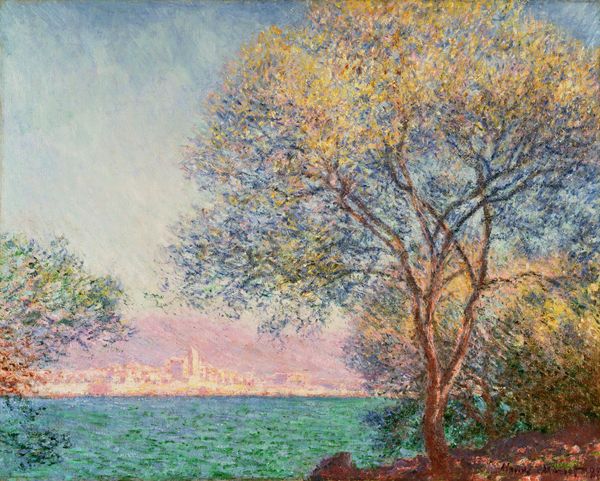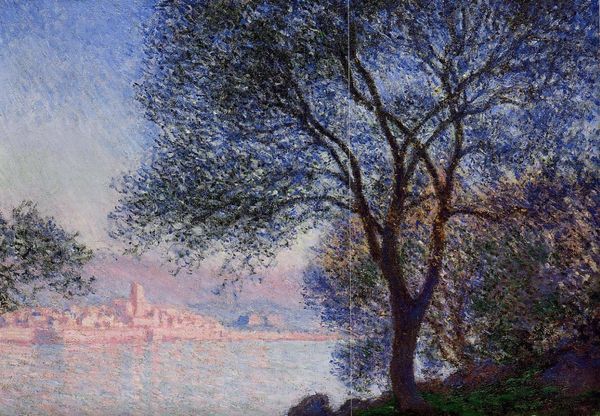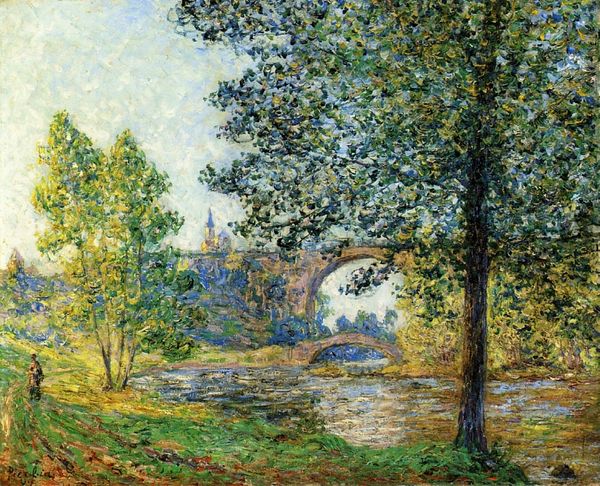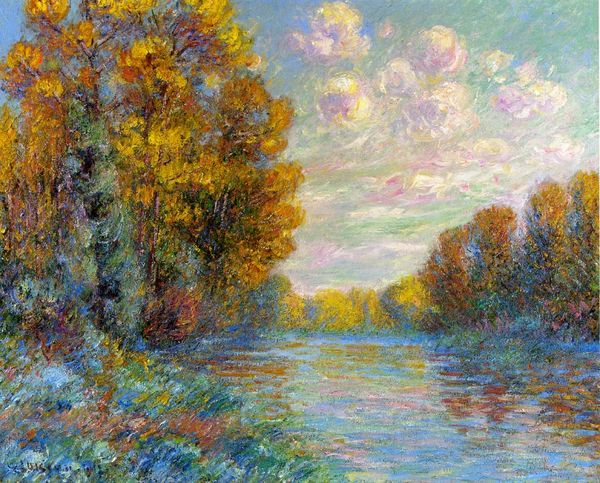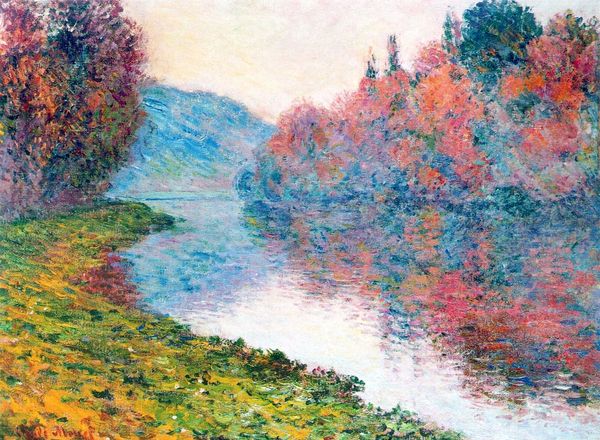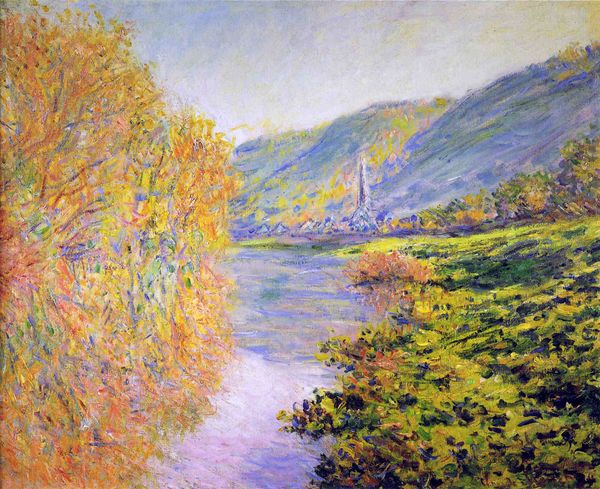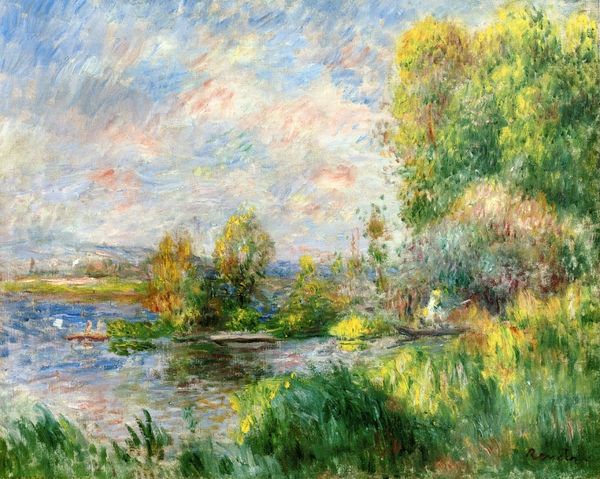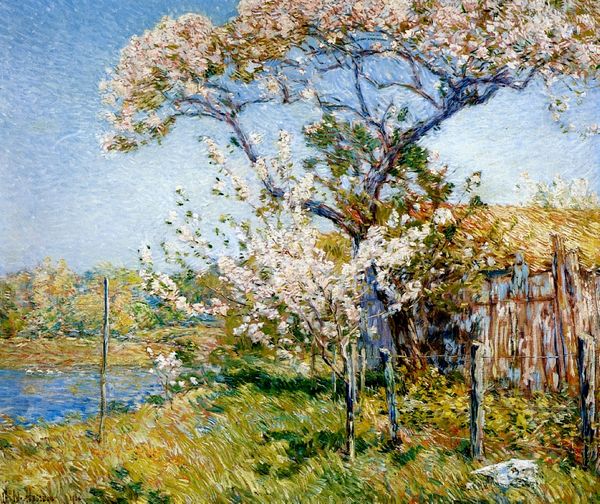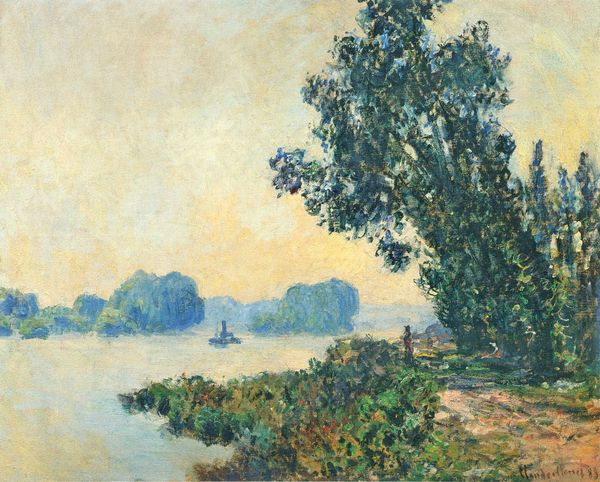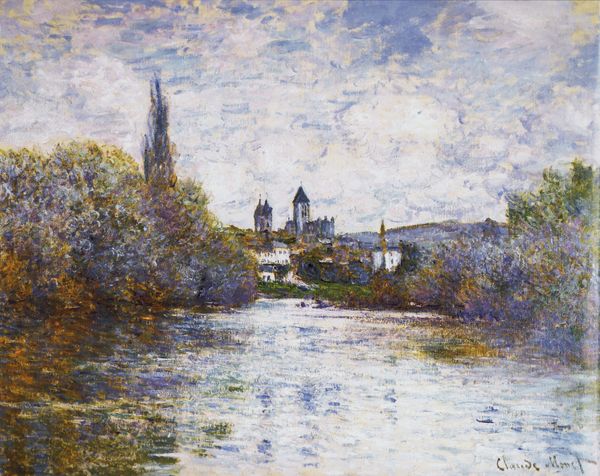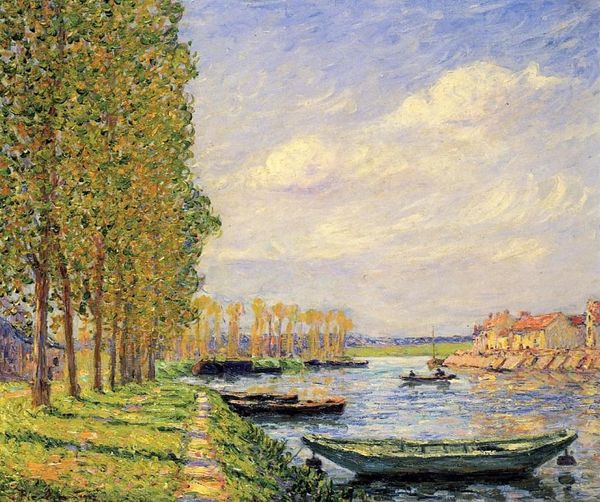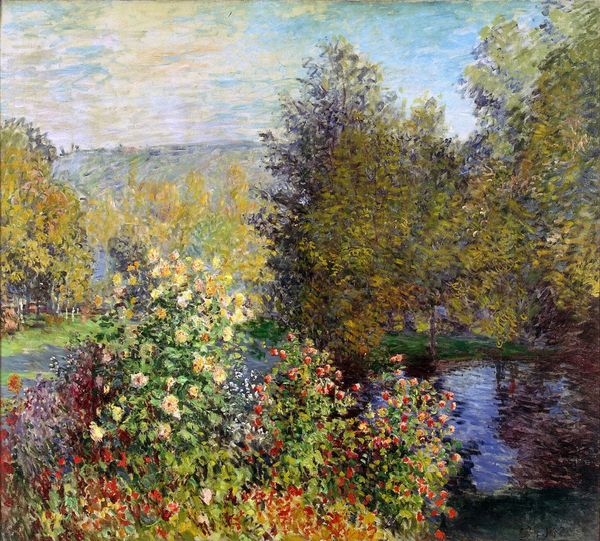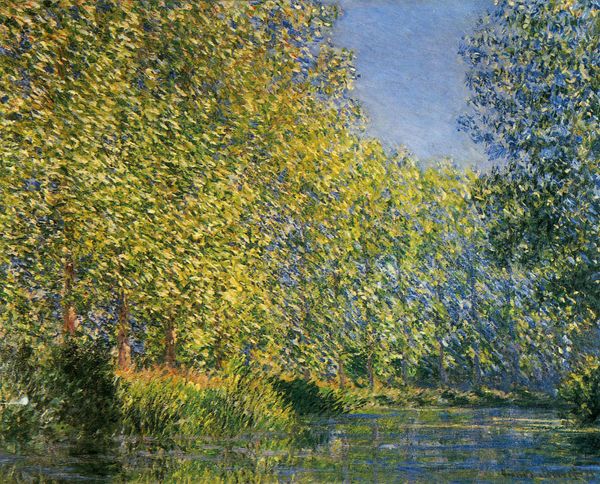
Copyright: Public domain
Editor: This is Claude Monet’s “Antibes Seen from the Salis Gardens,” painted in 1888. It's such a vibrant landscape! The blues and yellows are striking. It feels almost dreamlike. What do you see in this piece beyond the surface beauty? Curator: Beyond the aesthetic appeal, I see a dialogue with power structures inherent in landscape painting. How does Monet, as a privileged artist, depict this specific locale, Antibes, on the French Riviera? Think about the colonial history intertwined with this landscape. The French Riviera wasn't just a vacation spot, it was a site of power, of wealth accumulated through colonial endeavors. Monet's gaze, even in its beauty, is part of that history. Editor: So, even in what seems like a purely aesthetic scene, there's an embedded social commentary? Curator: Absolutely. And it's not necessarily a conscious commentary on Monet's part, but that’s the point! Consider who has historically had access to represent landscapes like this. It’s typically been those in positions of power. Where are the perspectives of the marginalized? How might a worker, or a colonized person, depict this same view? Those are the voices we need to actively seek out. Editor: That shifts my perspective completely. I hadn't considered that landscape painting itself could be a product of social hierarchies. Curator: Precisely! It challenges us to view art through a more critical lens, always asking: whose stories are being told, and whose are being omitted? Art is rarely neutral. Editor: It definitely gives me a lot to think about – not just about Monet, but about the whole genre of landscape art. Curator: Indeed. Seeing beyond the beautiful colours towards what narratives are being woven – that’s how art can speak to social change.
Comments
No comments
Be the first to comment and join the conversation on the ultimate creative platform.
